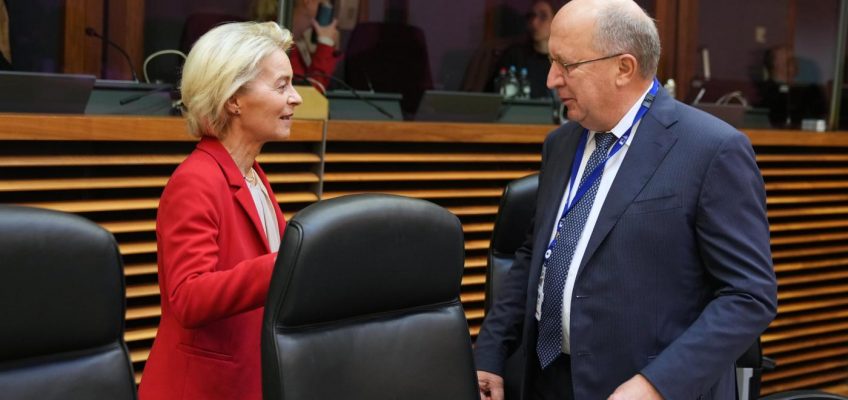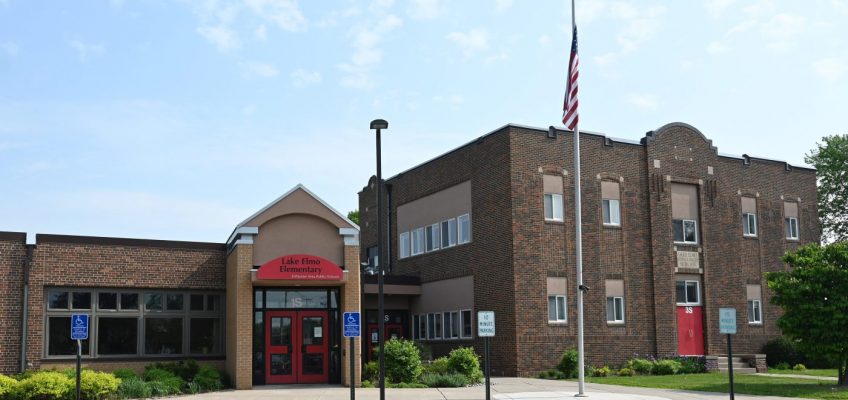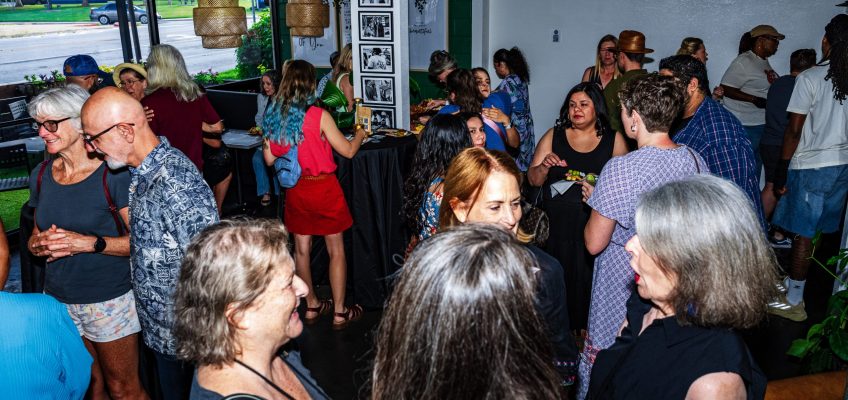Around 30 people recently gathered at a Fort Worth co-working space to discuss ways to build a more inclusive community for all of Tarrant County’s residents. “Welcome to the one-year anniversary of the 817 Gather,” Nydia Cardenas, the event organizer, told the crowd. “Whether it’s your first time or your 12th time, you are welcome here.”
The monthly meetings, held every third Sunday and organized by the 817 Podcast, a weekly morning show focused on local politics, have become a hub for collective action to combat the influence of right-wing extremism and recent efforts by Tarrant County’s three GOP commissioners to consolidate power through precinct-level redistricting.
On June 3, 2025, county commissioners Matt Krause and Manny Ramirez joined fellow Republican Tim O’Hare, the county judge, in approving one of seven proposed redistricting maps, overriding strong public opposition and the dissenting votes of Democratic commissioners Roderick Miles, Jr. and Alisa Simmons.
That decision weakens minority representation into Precinct 2, which is currently held by Simmons, while packing minority groups into Miles’ Precinct 1 ahead of the March 2026 primary. Those elections will determine the party nominees for the county judge race and the commissioner seats in Precincts 2 and 4.
The effort to redraw Tarrant County along partisan lines has galvanized several progressive-minded groups to organize and collaborate like never before.
Chris Tackett, a Tarrant County activist who founded See It, Name It, Fight It to combat local right-wing extremism, was at the recent grassroots gathering and told the Texas Observer that county Republicans fear losing the county judge seat. Flipping control of a more favorably drawn Precinct 2 could serve as a buffer that allows Republicans to retain a majority on the Commissioners Court even if Republicans lose the top county position in the November 2026 general election. “There are enough voters out there who can absolutely turn an election and blow up what they are trying to do,” he said.
Cardenas, who has worked for over a decade as a consultant and mentor with minority-owned businesses and startups, used the recent 817 Gather meeting to announce her candidacy for Precinct 4 commissioner. It’s a decision, she told the Observer, that was spurred, in part by the recent months-long battle to prevent gerrymandering in Tarrant County, which is the top battleground county in Texas. Republican incumbent Manny Ramirez won that seat in 2022—part of a conservative wave election in Tarrant—by 18 points, giving Republicans a majority on the court. O’Hare was also elected that year by 6 percentage points.
For years, she’s been a key community organizer for progressive causes that have sought to push back on the influence of right-wing churches and Christian Nationalists in local politics. Cardenas pointed to the Fort Worth City Council’s vote in late 2024 allowing Mercy Culture Church to move forward with its large trafficking-recovery shelter— despite vocal neighborhood opposition—as an example of the growing influence of radical Christian groups in local government. Mercy Culture’s leaders have openly supported Republicans like O’Hare and Krause while characterizing opponents as “warlocks.”
Community meetings, including this one organized by the 817 Podcast, have galvanized Tarrant County residents in recent months.
(Photo by Marc Arjol Rodríguez)
Since O’Hare, Krause, and Ramirez took office, they’ve created an “Elections Integrity Unit” to prosecute local voter fraud cases, even though a 2020 state audit found no evidence of widespread election meddling in Tarrant County. The Republican commissioners recently approved funding for a new Law Enforcement Training Center at the request of Sheriff Bill Waybourn at a cost of $60 to $75 million, despite widespread condemnation of the sheriff’s handling of in-custody deaths at Tarrant County Jail.
Those 817 Gather meetings have drawn together local activists like Tackett and his wife, Mendi, along with Tarrant4Change director Alexander Montalvo and other grassroots group leaders. In the spring of 2025, the group learned that the Commissioners Court was preparing to vote on hiring the Public Interest Legal Foundation, a conservative law group from Virginia, to advise on changes to district boundaries for the 2026 elections. “It sounded like it was just going to happen, and nobody was paying attention,” Montalvo recalled.
Leading up to the April vote, the grassroots activists prepared to speak at the commissioners court meeting and to attend one of four public input sessions organized by the county. Since O’Hare won his election in 2022, commenting publicly at Commissioners Court meetings has become difficult and even dangerous for residents trying to exercise their First Amendment right to petition their county leaders.
In July 2024, both a local pastor and a former lawmaker were banned from the Commissioners Court and issued trespass warnings for expressing concerns about the alarming number of deaths occurring at Tarrant County Jail. At one meeting, O’Hare warned the public that breaking decorum or speaking beyond the allotted limit “may result in arrest and prosecution.” This year alone, multiple speakers have been arrested for yelling or clapping during county meetings that have been reduced from weekly to biweekly, and, more recently, to monthly sessions where county budgets are approved and vendors are paid.
Ann Zadeh, a former Fort Worth city councilmember and one of the 817 podcast hosts, told the Observer that she advises people to prepare one-minute speeches, even though they are allowed a full three minutes under the court’s own rules. “O’Hare often cuts off speakers well before their three minutes are up,” she said, calling his approach “authoritarian.”
Tackett said the network of grassroots groups spotlighted the voices of public speakers who were opposed to the redistricting. Ahead of the June vote, Chris said their effort culminated in 600,000 views across Facebook, Instagram, TikTok, and Discord.
“When we talked to people who were showing up to the meetings, whether at Commissioners Court or the precinct meetings, we had people who were saying that they saw the video and wanted to show up and speak,” he said. “It became almost contagious for folks to realize their voice had power.”
On June 4, the day after the county Republicans passed their redrawn map, five local plaintiffs filed a federal lawsuit in the Northern District of Texas challenging Tarrant County’s newly adopted Commissioners Court map. The complaint argues that the map violates Section 2 of the Voting Rights Act and infringes on the 14th and 15th Amendments by diminishing the voting power of minority communities.
The lawsuit describes a map drawn with a clear intent, stating that the redistricted map “gerrymanders the County to eliminate one of the two existing majority-minority precincts and instead packs the bulk of the County’s minority voters into a single precinct while cracking others across the remaining three precincts. [The map] surgically moves minority voters from District 2 to District 1 while just as carefully moving Anglo voters from District 1 to District 2.”
Tarrant County’s spokesperson did not respond to the Observer’s request for comment. O’Hare has not hidden his agenda, saying in one televised interview in May that he’s redistricting Tarrant County “to put another Republican on the Commissioners Court. Period.”
Commissioner Simmons told the Observer that the redistricting was a racially motivated effort to “silence the voices of African Americans, Hispanics, and other minorities.” She said it was important to have the help of grassroots activists fight back locally against a national MAGA agenda. “He is carrying out the edict of Project 2025 at the local level,” she said, referring to the top-down effort by conservatives to roll back civil rights and personal freedoms. “It is happening right here in your own backyard. This is where you have to pay attention.”
Montalvo said any gerrymandered map bases its protections on recent voting patterns while he predicts that 2026 will see a “seismic shift” in turnout. “Tarrant County has the potential to be the election story of the 2026 midterm election cycle, not only in Texas, but in the country,” he said. He noted that 48 percent of voters in state Senate District 9, which has been reliably Republican for decades, recently voted for Democrat Taylor Rehmet, who now heads into a runoff against Southlake right-winger Leigh Wambsganss.
Local Republicans, Montalvo continued, may have analyzed the county’s demographics and voting partners, but they are misguided in two key areas. “Human hubris and human ingenuity are two things we can’t quantify,” he said. “I think the hubris of this racial gerrymandering is going to come back to bite the Republicans because of the human ingenuity of what you’re seeing amongst grassroots organizing.”
The post In Tarrant County, a Grassroots Coalition Pushes Back on Christian Nationalists appeared first on The Texas Observer.




